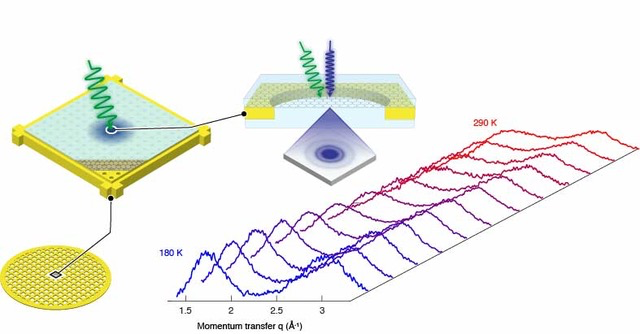Water is arguably the most important liquid, since it is quintessential for life as we know it. Yet, fundamental gaps remain in our understanding of its properties. Even though the origin of the anomalous behavior of water has been intensely researched for over 40 years, a definitive microscopic explanation has remained elusive. The key appears to lie in the deeply supercooled regime, from where the anomalies emanate. Most vexingly however, water crystallizes rapidly upon supercooling. This has largely precluded any direct characterization of the supercooled liquid that spans the entire temperature range of 160–230 K, the so-called “no man’s land”. We have recently shown how to overcome this decades old challenge and introduced a new approach that allows us to systematically characterize the structural evolution of water over the complete temperature range of no man’s land using time-resolved electron diffraction.

Related publications:
Electron diffraction of deeply supercooled water in no man’s land
C.R. Krüger, N.J. Mowry, G. Bongiovanni, M. Drabbels, U.J. Lorenz. Nat Commun. 14, 2812 (2023)
Direct Measurement of the Critical Cooling Rate for the Vitrification of Water
N.J. Mowry, C.R. Krüger, M. Drabbels, U.J. Lorenz. Phys. Rev. Res. 7, 013095 (2025)
Flash melting amorphous Ice
N.J. Mowry, C.R. Krüger, G. Bongiovanni, M. Drabbels, U. J. Lorenz. J. Chem. Phys. 160, 184502 (2024)
Shaped Laser Pulses for Microsecond Time-Resolved Cryo-EM: Outrunning Crystallization During Flash Melting
C.R. Krüger, N.J. Mowry, M. Drabbels, U.J. Lorenz. J. Phys. Chem. Lett. 15, 4244−4248 (2024)